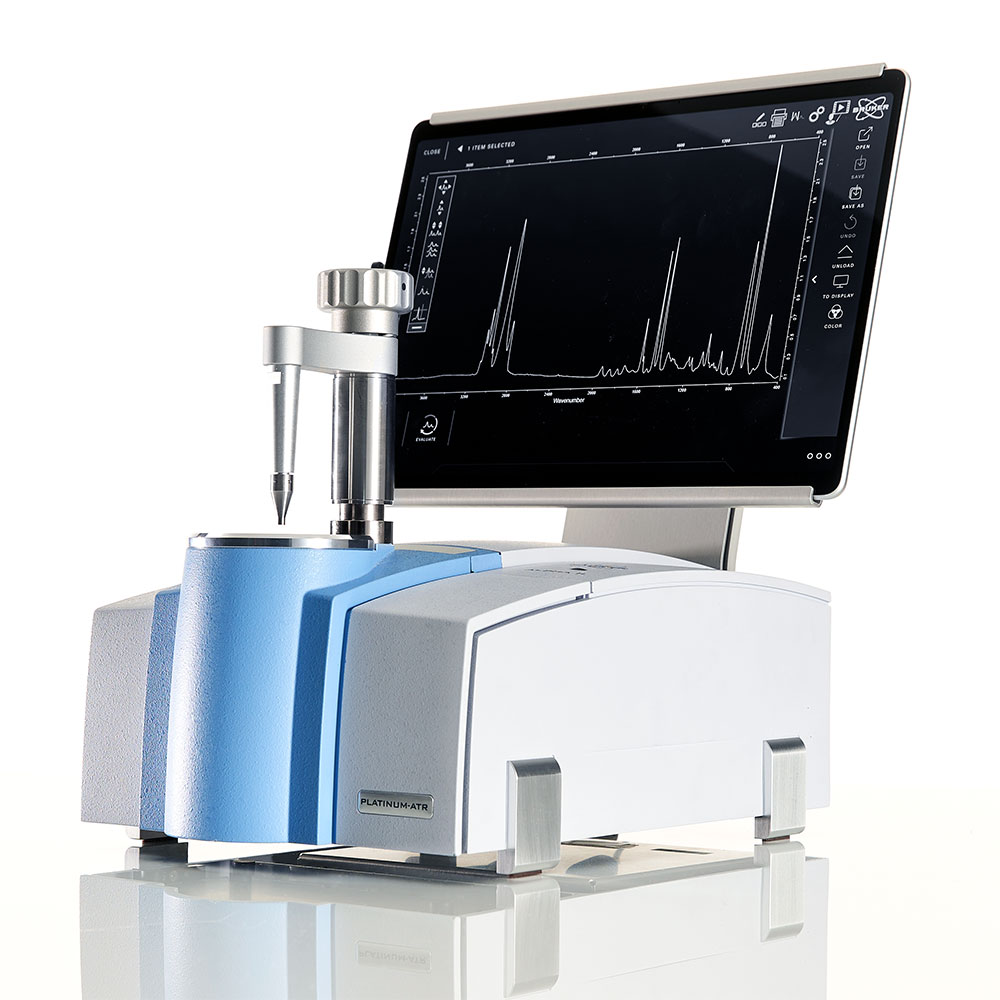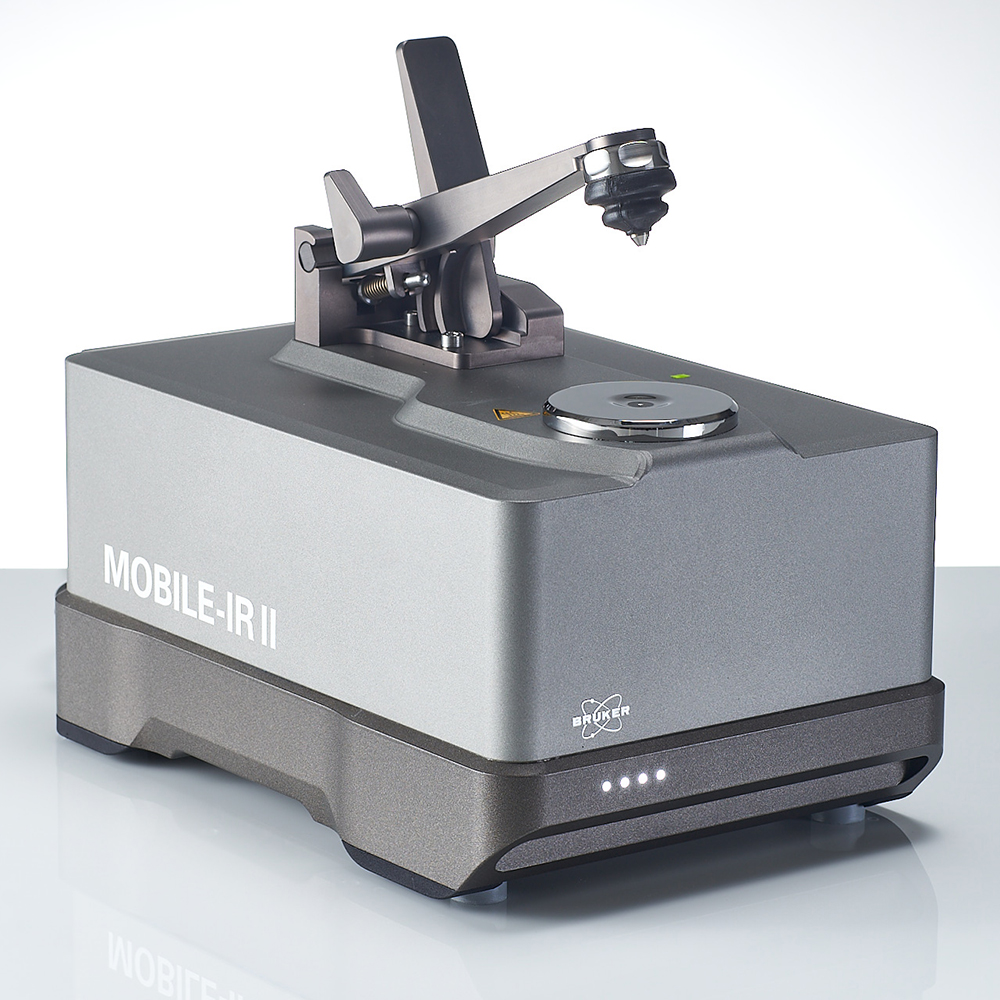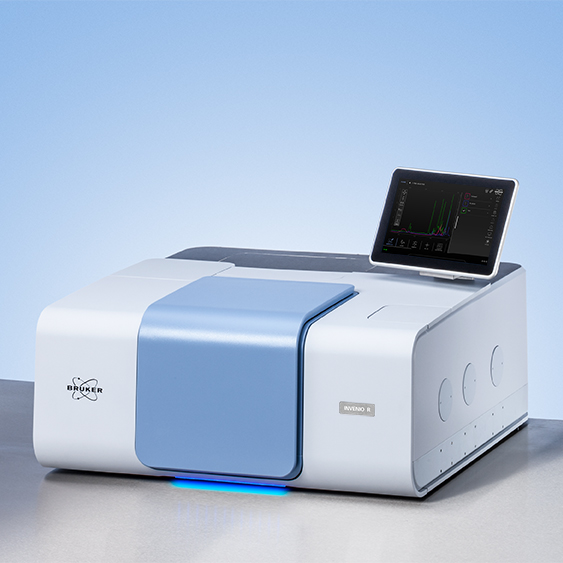What is reflectance (FT-) IR spectroscopy
Why we use reflectance FT-IR
In IR spectroscopy, IR light is shined on a sample causing the IR light and the sample to interact. Some of the IR light will be absorbed by the sample but some will be reflected off the surface of the sample instead. In transmission and ATR measurements, the IR light that passes through the sample after interacting with it is detected.
However, when a reflectance measurement is done, the light that is reflected off the sample surface is detected. This difference makes reflectance excellent for investigating samples that are difficult or impossible to analyze with transmission or ATR.
Types of reflectance IR measurements
There are three types of reflectance measurements that can be performed:
- reflection-absorption
- specular reflection
- diffuse reflection.
Reflection-absorption
Reflection-Absorption, also referred to as “transflectance,” is similar to the absorption based measurement techniques. During this process, IR light passes through the sample and is then reflected off a reflective substrate. The sample needs to be very thin for this technique so the IR light can pass through the sample properly without being totally absorbed.
The angle of the IR light beam, or the incident angle, can be changed to alter to path of the IR light through the sample. If the incident angle of the IR light is increased, the path the IR light travels through the sample will be longer which increases the amount of IR light the sample absorbs. This allows us to analyze extremely thin samples with reflection-absorption, even samples that are only one molecule thick, as long as the incident angle is large enough.
This makes reflection-absorption well suited for studying any sample that is very thin, like tissues and coatings. Reflection-absorption could also be used for determining the thickness of a layer or coating, or for characterizing the surface of a material.
Since reflection-absorption is so similar to absorption techniques, the resulting spectra is also quite similar. The spectra will require no further data processing or conversion to be directly compared to a spectrum obtained through a transmission measurement.
Specular reflection
In specular reflection, IR light is simply reflected off the sample surface, so the sample itself must be smooth and reflective to use this technique. Specular reflectance is good for analyzing any reflective material such as metal coatings, plastics, glass, minerals, and gemstones. Also, this is a no-contact method of analysis so it’s perfect for rapid material identification and for analyzing pieces of art.
However, there is one difficulty that arises while using specular reflection: the spectra obtained from this technique appear quite different than ones obtained from absorption measurements. This is largely due to differences in how different wavelengths of IR light interact with and reflect off the sample.
The changes this creates in the spectrum can be corrected using a mathematical operation called the Kramers-Kronig-Transformation (KKT), which allows spectra obtained by specular reflection to be compared to spectra obtained by transmission.
However, the Kramers-Kronig-Transformation has two requirements. First, the measurement must be performed such that the IR beam is perpendicular to the sample. Secondly, the sample must show only specularly reflected light, there should be no light that is scattered or diffusely reflected. If these conditions are met, the spectra obtained by this method are very high quality.
Diffuse reflectance and DRIFTS
Though specular reflectance measurements requires that there is no diffuse reflection that occurs when the IR light is shone on the sample, is a technique that does measure diffuse reflection. This technique is called Diffuse Reflectance Infrared Fourier Transform Spectroscopy (DRIFTS). In this technique, the IR light interacts with the sample and is then scattered off the particles in the sample in all directions. The scattered light is collected with gold mirrors and then detected.
The amount of light that is diffusely reflected depends heavily on the nature of the sample, such as the shape, size, and compactness of particles in the sample as well as the refractive index of the sample. The quality of the DRIFTS spectrum is directly related to the amount of diffusely reflected light that it detected. So, to ensure a high quality spectrum is created, the IR light must be able to penetrate the sample deeply to increase the amount of diffusely reflected light. This means the proper sample preparation is extremely important to obtain a high-quality DRIFTS spectrum.
To properly prepare a sample for analysis with DRIFTS, the particles in the sample must be small and uniform so the sample must be ground and well mixed. The sample also need to be diluted with a solid, like KBr, that doesn’t interact with IR light. These steps will ensure the IR light can penetrate the sample more deeply, producing more diffusely reflected light and a high quality DRIFTS spectrum.
However, the DRIFTS spectrum looks different from a transmission spectrum. While a DRIFTS spectrum does resemble a spectrum produced through transmission, the intensities and shapes of each signal do not match up exactly. Additionally, there is a big difference between transmission and DRIFTS spectrum that makes data analysis difficult.
In a transmission measurement, the intensities of the signals are directly related to the concentration of the sample. This relationship allows the IR spectrum to be used for applications that involve quantifying species in a sample. However, this relationship is not present in a DRIFTS spectrum. Fortunately, the differences can be corrected by using the Kubelka-Munk function, which produces a spectrum very similar to one made through transmission.
Though the sample preparation for DRIFTS is intensive and the data requires processing, the overall result of using DRIFTS is excellent spectral quality that can used to investigate a wide array of solid samples. DRIFTS is excellent for analyzing soil samples, catalysts, or the raw materials from mining. It can also be used in research fields like geology, or in any application that requires quantifying solid samples.
These three reflectance measurement techniques make it straightforward to obtain high quality FT-IR spectra for a wide range of solid samples, from tissues, to soils, to artwork. Of course, reflectance won’t always be the appropriate technique to use so understanding transmission and ATR is important as well so the correct technique for each sample can be chosen.




